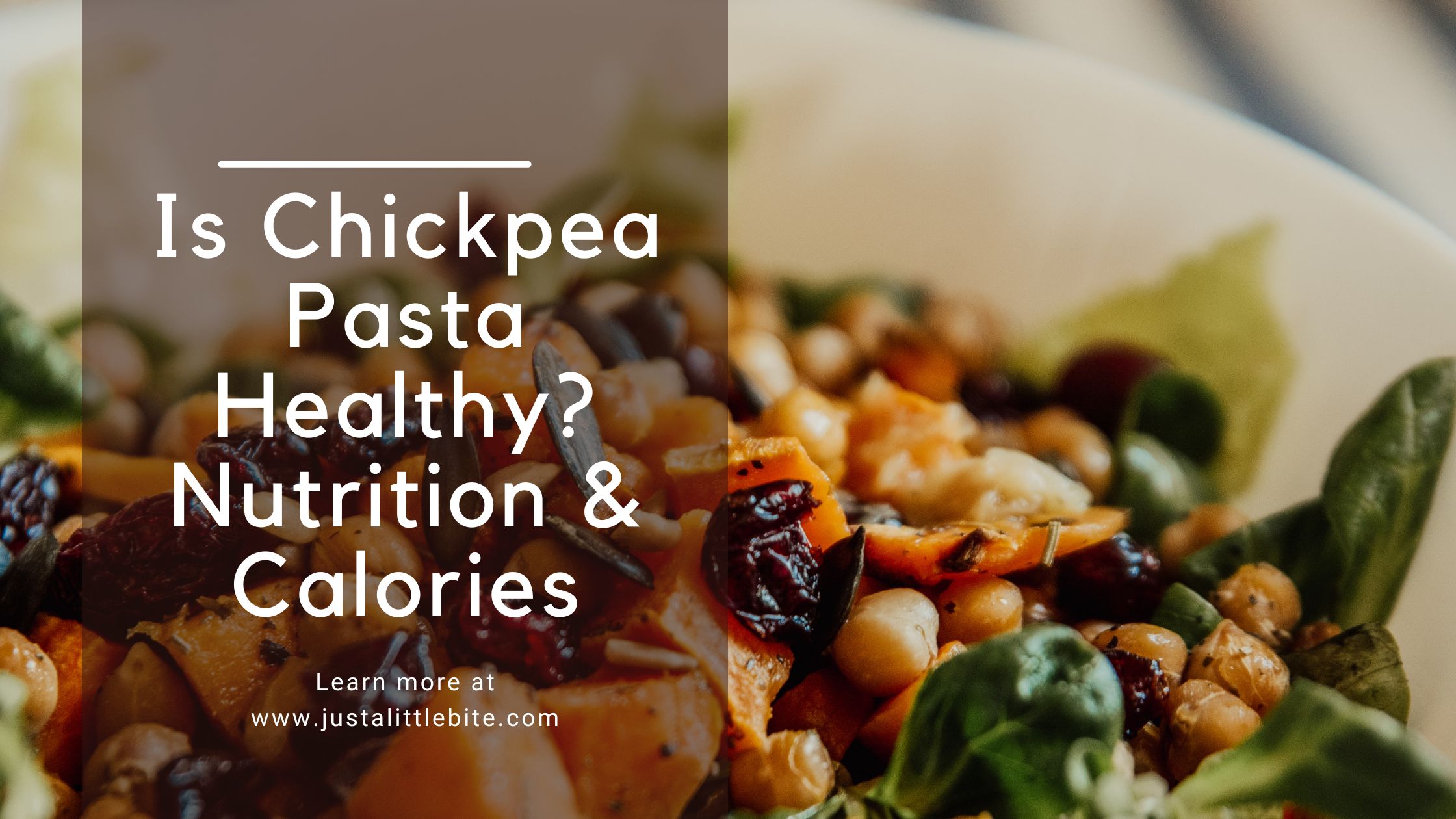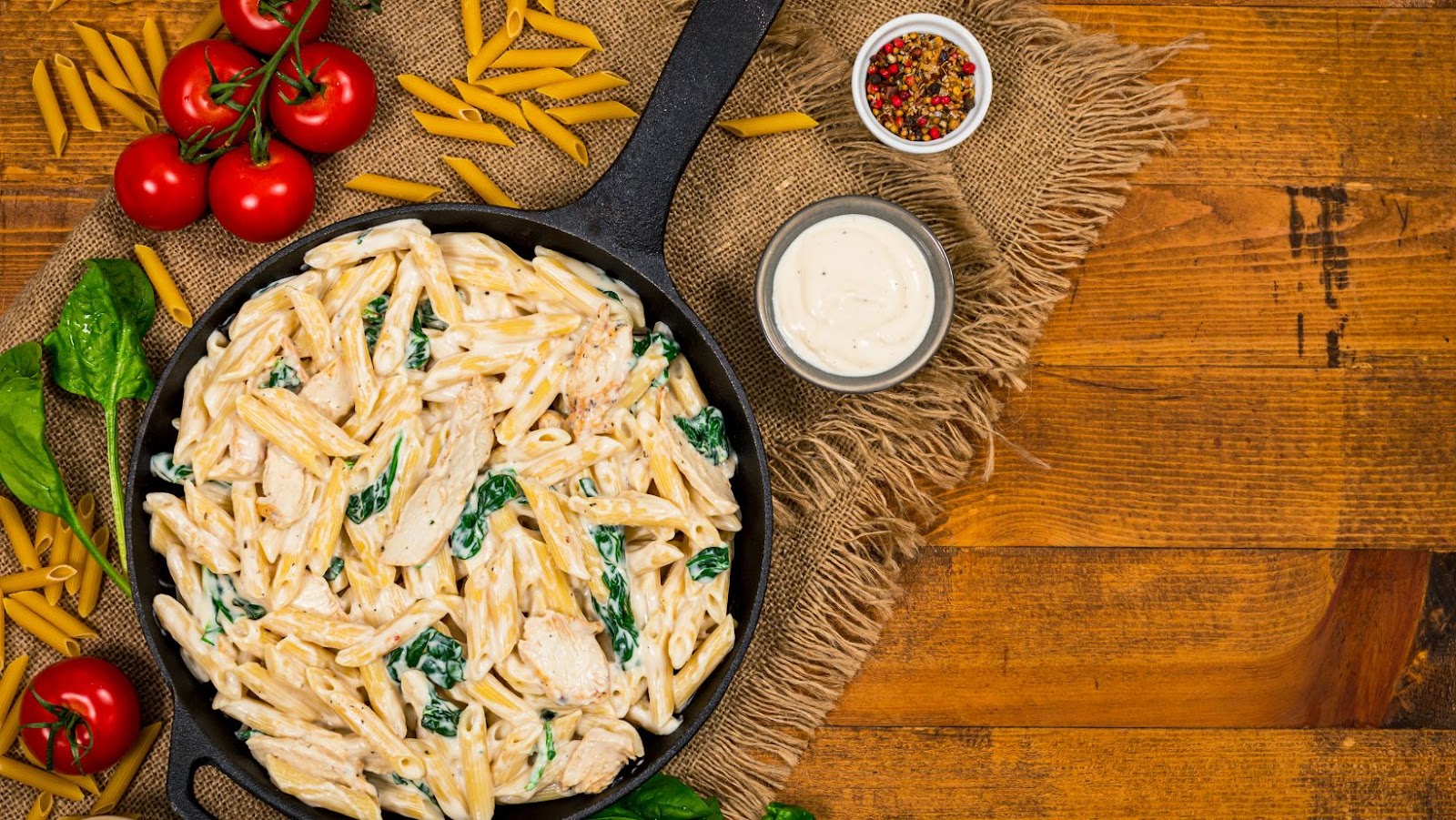Is Chickpea Pasta Healthy? Nutrition & Calories

Maintaining a healthy diet and healthy lifestyle is challenging. It is even tougher if you have celiac disease or just want to avoid weight gain. Many processed foods are marketing themselves as vegan-friendly or a healthy alternative for celiac disease, but these can hide some nasty extras.
How can you find tasty food with a balanced nutritional composition? Chickpeas are a great option. Chickpea pasta is a healthy alternative to traditional pasta made from wheat, so it is safe for those with celiac disease. In addition, chickpeas are a good source of pea protein and fiber, which can help you feel full and satisfied after eating.
How Chickpea Pasta Is Made
Chickpea pasta comprises chickpeas, water, and a small amount of flour. Pounded chickpeas are combined to make chickpea flour, which is then mixed with water to produce dough.
In order to make the required shape of pasta, the dough is stretched through a pasta die.
After that, the pasta is dried and kept for up to two years. Chickpea pasta is still processed food. However, it is mainly natural and contains minimal added extras.
Is Chickpea Pasta Healthy?
Chickpea pasta is a healthy option for anyone looking for a high-protein, nutritious alternative to regular pasta.Chickpea pasta is low in calories and has a low glycemic index with essential amino acids, so it’s a good choice for people with celiac disease or who are trying to manage their sugar levels.

In addition, it is a go-to food for a gluten-free diet. Due to chickpea pasta’s high protein content, it is part of many vegan diets. It also has brilliant levels of amino acids, which our bodies need to break down food.
Differences Between Chickpea and Wheat Pasta
Overall, chickpea pasta is richer in nutrients than regular pasta. Chickpea pasta offers more of all of the good stuff than wheat pasta. Pasta made from wheat has a higher glycemic index than chickpea pasta, meaning it causes a sharper spike in blood sugar levels. Those who have celiac disease should avoid other kinds of pasta because they are high in gluten.
Chickpea pasta is still processed food. However, it is mainly natural and contains minimal added extras.
Nutritional Facts
Chickpeas are a high-protein, high-carbohydrate, high-fiber, high-antioxidant, high-vitamin, and high-mineral legume. Chickpeas’ fiber and protein content may help with blood sugar control, weight management, and digestive health. It may also reduce the risk of various diseases, including celiac disease.
Nutritional Table (per 100g)
| Calories/Nutrient | Amount |
| Calories (Kcal) | 333 kcal |
| Net Carbs (g) | 56.1 g |
| Fiber (g) | 14 g |
| Sugar (g) | 8.77 g |
| Fats (Total) | 6.14 g |
| Protein (g) | 24.6 g |
| Cholesterol (mg) | 0 mg |
(Nutritional data from the USDA)
High in Vitamins and Minerals
Vitamins and minerals are abundant in chickpea pasta. It contains Vitamins A, B, C, and E, along with iron, magnesium, phosphorus, potassium, and zinc.
High in Protein and Carbs
The body quickly absorbs simple carbs, whereas complex carbs take longer to digest, making them a more stable energy source. Chickpeas are complex carbohydrates and are great for your digestive health. Chickpea pasta is an excellent all-around complete food because of its high carb and protein levels. Chickpea pasta has twice the protein and four times the fiber of regular pasta while having half the carbs.
Low in Fats and Cholesterol
There is no saturated fat, cholesterol, or added sugar in chickpea pasta.
Having food with low cholesterol helps keep blood pressure under control. It aids artery flexibility and responsiveness. It is even a better substitute than brown rice flour.
A Word From Our Nutritionist
Chickpeas are superfoods containing up to 8 grams of protein and fiber in every 12-cup serving.
Along with other pulses like beans, peas, and lentils, they’re also a sustainable food source and a significant part of a balanced diet for everyone, not just those with celiac disease. Chickpea pasta is deserving of all the attention it can get.

Compared to standard wheat-based pasta, a traditional 2-ounce serving size contains slightly fewer calories, twice as much fiber, and up to twice as much protein.
While typical pasta contains plant-based protein and fiber, chickpea pasta has more iron and potassium, two crucial nutrients for blood circulation.
It may also save you money because you won’t need to buy additional protein, such as beef or chicken, to have on the dinner table. A store-bought chickpea pasta variety pack is great for a family lunch with some tomato sauce.
Chickpeas are a high-protein, high-carbohydrate, high-fiber, high-antioxidant, high-vitamin, and high-mineral legume. Chickpeas’ fiber and protein content may help with blood sugar control, weight management, and digestive health.
Conclusion
Are you looking for a spaghetti carbonara or pasta salad? Do you want to maintain a balanced diet without skimping on flavor? Substituting chickpea pasta is a great choice. Chickpea spaghetti can be a tasty addition to your meal plan. Substitute chickpea pasta to promote a really nutritious diet packed with the vitamins and nutrients you need to be healthy.
As with all foods, eat chickpea pasta as part of a balanced meal. Check out our website to find out more about foods that are good for celiac disease or that can fit into a gluten-free diet.


